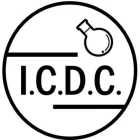The table in the question shows details of the particles present in an atom of potassium and in ions of potassium and sulfur. What are values of W, X, Y and Z?
What are atoms?
Elements are made up of tiny particles called atoms. Each element consists only of one type of atoms. Atoms are the smallest particles of an element that have the chemical properties of that element. Atoms are electrically neutral.
What are atoms made of?
Atoms are made up of protons, neutrons and electrons. Protons, neutrons and electrons are sub-atomic particles. Protons and neutrons are in the dense centre called nucleus. Electrons move around the nucleus in electron shells.
What is nucleon number (mass number)?
Nucleon number, also known as mass number, is the sum of number of proton and neutrons. Mass of electrons is negligible, as compared to mass of protons and neutrons in the atom. The mass of an atom depends mainly on the number of protons and neutrons it has in its nucleus. Hence, nucleon number = total no. of protons + total no. of neutrons
Formation of ions does not affect the nucleon number. When ions are formed, only the number of electrons changes.
What is proton number?
The number of protons in an atom is called the proton number or atomic number. Atoms are electrically neutral, hence number of protons = number of electrons. Proton number is the number of protons in the atom of an element. Each element has a unique proton number. Atoms of different elements have different number of protons. An atom with proton number of 8 is oxygen atom. In other words, only the element oxygen has proton number of 8.
GCE O level, Singapore, 2016/P1/Q4
Topic: Atomic Structure, O Level Chemistry, Singapore
Please SUBSCRIBE to my channel and SHARE this video with your friends if you find it helpful!
